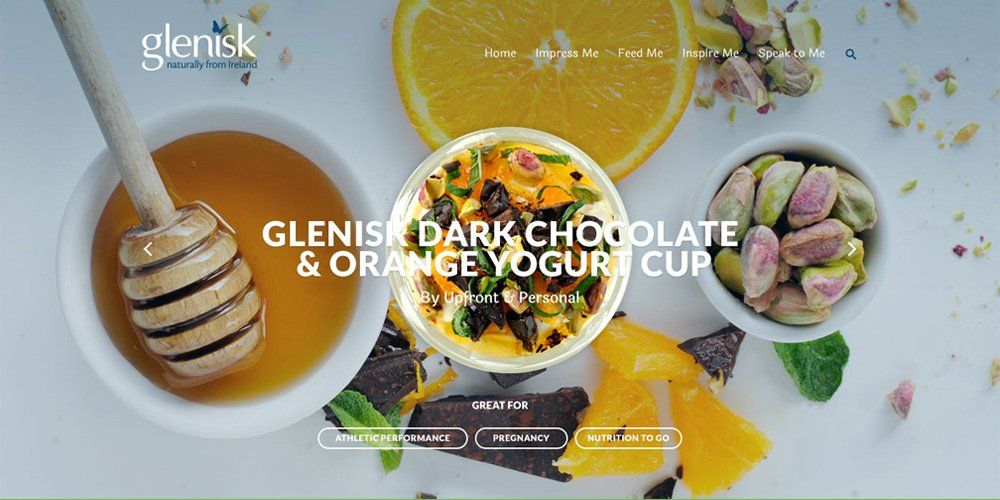Don’t freak out - but people are irrational and emotional. This includes you (and me) and you probably have some feelings about that statement and those feelings will vary depending on your current emotional state and a plethora of other variable factors, but let’s face it - that kinda proves the point.
“Humans have always been emotional and have always reacted to the artifacts in their world emotionally.” – Alan Cooper, President of Cooper

It may not seem immediately relevant but the recognition of this simple but emotive statement is at the core of all good design processes. When it comes to digital design, which is often categorised into UX (user experience) and UI (user interface) design you should be able to recognise this throughout the entire process. UX is, after all, named after what your users experience - by its very nature it is concerned with how people think, act and feel when using a product. This might be quantified through research, data and analytics but at the end of the day all this information is aiming to help humans have easy and pleasant experiences with digital products - be they websites, apps or software.
The thing is, no matter how much research and user testing data and analytics you have to pull from when considering how and why to design something a certain way, one thing that is never 100% reliable is the aforementioned, totally emotional user. Humans are unpredictable, irrational, emotional and have a strong tendency to make decisions based on feeling over logic or reason. This isn’t a bad thing it’s just one of those things that needs to be kept in mind when undertaking any design project - we are designing for humans, not robots.
The good news is that designers and various other types of digital professionals and researchers have been well aware of this for quite some time now and so everything isn’t left entirely to chance. Through well-thought-out UX research and a considered UI design we can go a long way towards making something that works seamlessly while being enjoyable and engaging enough to help your product be memorable for your users and/or potential customers.
“People will forget what you said. People will forget what you did. But people will never forget how you made them feel.” - Maya Angelou
There are plenty of discussions around whether form or function is more important when it comes to any area of design but realistically, if you want to create something truly excellent you need both form and function, brains AND beauty - they compliment each other. Sure, they can exist, and succeed to a certain degree in isolation, but the experience will never be wholly satisfying. People tend to perceive beautiful things as more functional, regardless of whether or not they actually are so imagine the power a highly functional AND beautiful thing could have on someone.
To do this right it’s important to start by making sure your product is well thought out, easy to use and meets your users (and stakeholders) needs. This should be at the core of any design endeavour you undertake. This typically falls under the umbrella of UX and if you find a designer (or agency) that places a lot of importance on UX design you’re off to a great start! Sometimes it can feel like this is time (and money) spent on a whole bunch of nothing - the deliverables aren’t flashy or visually appealing (or at least they shouldn’t be) but trust me - some sturdy UX foundations are vital to both the long and short term success of your site.
Once you’ve got the nuts and bolts in place, don’t forget the body. UI design is the part of the process people are most familiar with - it’s the face of the product, how it looks, the branding, typography, hierarchy. It’s the colours and images and all the ‘cool’ and ‘pretty’ stuff. It’s understandable to think this part of the process is less vital if you know you’ve got a good sturdy product built that meets your users needs but the question is - will they want to use it in the first place?
The power of the UI phase of the design is in its fluency in the things that us emotional humans communicate in. It’s sensory and immediate and it’s where you can really tap into those powerful, decision making feelings that your users are running on. The visual design of your site is what forms first impressions - before users get the chance to experience the joyful UX you’ve carefully researched, they will be judging all hell out of your brand and/or product within seconds of landing on your website.
It gives an impression of your brand at first glance - it helps build trust and reassure. It communicates your brand voice and appeals to your target audience. It immediately helps users get an idea of who you are and helps to convey the feeling you want associated with your brand or product. Are you serious and professional or fun and approachable? This is where you get to set the voice of your product or company. What is being created at this stage is ‘not just a pretty website’ as our own Emmet Dunne would put it, it’s putting the feeling into your site so that it can speak to users in their own, irrational language.
What this all amounts to is that humans are emotional beings with ALL THE FEELS so make sure your design process has some feeling in it. Don’t rely on logic and reason to convince users to make decisions - figure out how to make them feel good about using your site or product through careful UX research and thoughtful and delightful UI design and you’ll likely figure out how to help users achieve their goals faster and easier. Care about and advocate for your users, use all the methods and tools at your disposal to make sure they are looked after and they will repay you in full with trust and loyalty.








